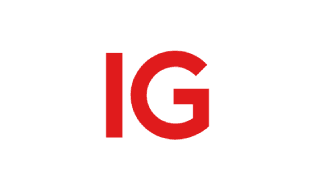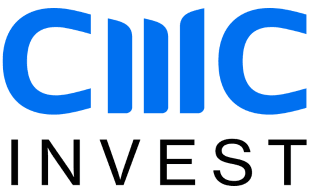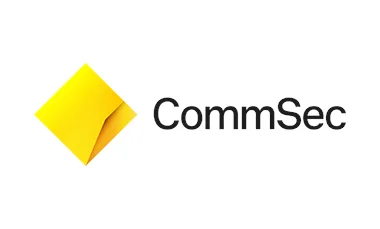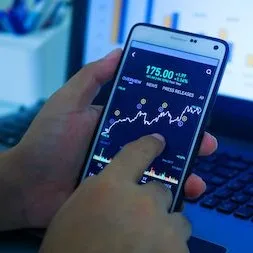Looking for the best exchange-traded funds (ETFs) in Australia? This guide will show you the top ETFs by performance over different time frames.
It's worth noting that ETFs can be used for all investment strategies, so there's no "one-size-fits-all" ETF. Instead, this is simply the performance over 1, 3 and 5 years based on the latest Australian Securities Exchange (ASX) data.
10 Best ETFs in Australia over the last...
Jump straight down to our comparison tables of the top ETFs in Australia over the last 1 to 5 years and compare performance, fees and strategies.
What's our methodology for these best ETFs?
We show the 10 highest-returning exchange-traded products on the ASX (updated monthly) over the last 1, 3 and 5 year periods. Our list includes all standard, synthetic and actively managed ETFs, which means some of them will be riskier than others. To understand more about what these terms mean, head to our guide to ETFs.
The returns shown are net, meaning the management fees have already been deducted to offer a clearer view of performance. Returns are also annualised, so for instance, a 5-year return of 2% equates to an average return of 2% every year over that period.
Remember past performance is no guarantee of future success. The best-performing ETF of the last year might decline in value in the future. The lesson here is that performance is one consideration, but you should also look at fees, how risky the product is, your investment goals and how long you can afford to invest.
Australia's best ETFs
The following ETFs are the best performing over the last 5 years in Australia. All performance figures are net of fees. To see how they compare over different time frames, scroll down to our 5-year performance comparison table.
1. Betashares NASDAQ 100 ETF (NDQ)
The Betashares NDQ ETF is the top performing listed fund in Australia over the last 5 years. It focuses on technology, tracking the NASDAQ-100 Index, comprising 100 of the largest non-financial companies listed on the NASDAQ stock exchange.
It's known for its significant exposure to big tech firms like Apple, Amazon, and Google. Its performance over the past five years has been bolstered by the robust growth of the tech sector, especially in areas like cloud computing, e-commerce, and digital services.
2. Betashares Resources Sector ETF (QRE)
This ETF provides exposure to the Australian resources sector, tracking an index of large and mid-cap resource companies listed on the ASX. It includes companies involved in materials, energy, and commodities. Its recent performance has been driven by global demand for resources, commodity price increases, and a strong Australian mining sector.
3. SPDR S&P/ASX 200 Resources Fund (OZR)
This fund tracks the S&P/ASX 200 Resources Index, focusing on the resources sector within the Australian equity market. It includes companies in energy, materials, and commodities. The fund's performance in the last five years has been influenced by the global economic recovery, driving demand for commodities and resources.
4. Betashares Global Sustainability Leaders ETF (ETHI)
This ETF invests in global companies that meet sustainability criteria, tracking an index of environmentally and socially responsible firms. It excludes companies with high carbon footprints and unsustainable business practices. The ETF has performed well due to its high exposure to US technology stocks and increasing investor interest in ESG (Environmental, Social, and Governance) factors.
5. Betashares Global Cybersecurity ETF (HACK)
This ETF provides exposure to global companies in the cybersecurity sector, tracking an index of firms involved in cybersecurity hardware and software. The rising demand for cybersecurity solutions, driven by increasing digitalisation and cyber threats, has bolstered its strong performance over the past five years.
6. Global X Battery Tech & Lithium ETF (ACDC)
This ETF focuses on the battery technology and lithium market, tracking companies involved in lithium mining, battery production, and related technologies. The growth in electric vehicles and renewable energy storage solutions has driven its performance, as these sectors heavily rely on advanced battery technologies.
7. VanEck MSCI International Quality ETF (QUAL)
This ETF tracks the MSCI World ex Australia Quality Index, focusing on high-quality companies outside Australia. These companies are characterised by high return on equity, stable year-over-year earnings growth, and low financial leverage. The ETF's good performance is attributed to its focus on fundamentally strong companies with sustainable business models.
8. VanEck Morningstar Wide Moat ETF (MOAT)
This fund tracks the Morningstar Wide Moat Focus Index, investing in global companies with 'wide economic moats' or sustainable competitive advantages. The selection includes firms with strong brand recognition, cost advantages, or unique products. Its solid performance is due to investing in companies that are well-positioned to maintain competitive advantages.
9. iShares Global 100 ETF (IOO)
This ETF provides exposure to 100 of the largest multinational corporations globally, tracking the S&P Global 100 Index. The ETF includes companies with significant international presence and diversified business operations, contributing to its resilience and steady performance over the past five years.
10. Global X Morningstar Global Technology ETF (TECH)
This fund tracks the Morningstar Developed Markets Technology Moat Focus Index, focusing on technology firms with 'economic moats' globally. It includes leading tech companies that have sustainable competitive advantages. The fund's strong performance is driven by the rapid growth and innovation in the global technology sector.
Best-performing ETF in Australia over the last year
As of December, the BetaShares Crypto Innovators ETF (ASX: CRYP) has taken the lead as the top-performing ASX ETF. This ETF offers focused exposure to the dynamic cryptocurrency sector, encompassing up to 50 companies heavily involved in the crypto economy.
| ASX Code | Type | Fund Name | Fund Name | Fee | 1-Year Return | 3-Year Return | 5-Year Return | ||
|---|---|---|---|---|---|---|---|---|---|
| CRYP | Global equity | Betashares Crypto Innovators ETF | Betashares Crypto Innovators ETF | 0.67% | 253.87% | n/a | n/a | ||
| LNAS | Global equity | Global X Ultra Long Nasdaq 100 Hedge Fund | Global X Ultra Long Nasdaq 100 Hedge Fund | 1.00% | 138.83% | 5.49% | n/a | ||
| FANG | Global equity | Global X FANG+ ETF | Global X FANG+ ETF | 0.35% | 96.53% | 15.83% | n/a | ||
| HYGG | Global equity (MF) | Hyperion Global Growth Companies Fund (Managed Fund) | Hyperion Global Growth Companies Fund (Managed Fund) | 0.70% | 70.09% | n/a | n/a | ||
| SEMI | Global equity | Global X Semiconductor ETF | Global X Semiconductor ETF | 0.57% | 69.37% | n/a | n/a | ||
| LPGD | Global equity (MF) | Loftus Peak Global Disruption Fund (Managed Fund) | Loftus Peak Global Disruption Fund (Managed Fund) | 1.20% | 61.15% | 9.98% | n/a | ||
| MOGL | Global equity (MF) | Montaka Global Equities Fund (Managed Fund) | Montaka Global Equities Fund (Managed Fund) | 1.32% | 58.08% | 7.14% | 8.47% | ||
| MKAX | Global equity (MF) | Montaka Global Extension Fund (Quoted Managed Hedge Fund) | Montaka Global Extension Fund (Quoted Managed Hedge Fund) | 1.25% | 57.82% | 1.46% | n/a | ||
| URNM | Global equity | Betashares Global Uranium ETF | Betashares Global Uranium ETF | 0.69% | 57.23% | n/a | n/a | ||
| MTAV | Global equity | Betashares Metaverse ETF | Betashares Metaverse ETF | 0.69% | 57.03% | n/a | n/a |
Best ETF in Australia based on performance over the last 3 years
The best-performing ASX ETF of the last 3 years is the Betashares Global Energy Companies ETF (FUEL) thanks to higher oil prices over the last few years. That's followed by the BetaShares Crude Oil Index ETF (OOO) which has also spiked due to increasing energy prices.
| ASX Code | Type | Fund Name | Fund Name | Fee | 3-Year Return | 5-Year Return | 1-Year Return | ||
|---|---|---|---|---|---|---|---|---|---|
| FUEL | Global equity | Betashares Global Energy Companies ETF - Currency Hedged | Betashares Global Energy Companies ETF - Currency Hedged | 0.57% | 22.86% | 6.57% | 0.78% | ||
| OOO | Commodity | Betashares Crude Oil Index ETF-Currency Hedged (Synthetic) | Betashares Crude Oil Index ETF-Currency Hedged (Synthetic) | 1.29% | 22.57% | -6.44% | -4.22% | ||
| GEAR | Australia equity | Betashares Geared Australian Equity Fund (Hedge Fund) | Betashares Geared Australian Equity Fund (Hedge Fund) | 0.80% | 18.73% | 18.93% | 25.26% | ||
| VVLU | Global equity | Vanguard Global Value Equity Active ETF (Managed Fund) | Vanguard Global Value Equity Active ETF (Managed Fund) | 0.29% | 18.51% | 12.64% | 18.86% | ||
| QRE | Australia equity | Betashares Resources Sector ETF | Betashares Resources Sector ETF | 0.34% | 17.99% | 18.68% | 14.16% | ||
| OZR | Australia equity | SPDR S&P/ASX 200 Resources Fund | SPDR S&P/ASX 200 Resources Fund | 0.34% | 17.54% | 18.18% | 13.45% | ||
| MOAT | Global equity | VanEck Morningstar Wide Moat ETF | VanEck Morningstar Wide Moat ETF | 0.49% | 16.73% | 17.59% | 30.58% | ||
| FANG | Global equity | Global X FANG+ ETF | Global X FANG+ ETF | 0.35% | 15.83% | n/a | 96.53% | ||
| MVB | Australia equity | VanEck Australian Banks ETF | VanEck Australian Banks ETF | 0.28% | 14.72% | 10.89% | 12.55% | ||
| XIFAI | Australia equity | S&P/ASX Infrastructure Index Accumulation | S&P/ASX Infrastructure Index Accumulation | n/a | 14.59% | 10.03% | 11.32% |
Best ETF in Australia based on performance over the last 5 years
The best-performing ASX ETF over the last 5 years is the BetaShares NASDAQ 100 ETF (NDQ). The ETF's price has gained in recent months as the tech-heavy NASDAQ recovers sharply from the 2022 correction driven by rising interest rates.
| ASX Code | Type | Fund Name | Fund Name | Fee | 5-Year Return | 3-Year Return | 1-Year Return | ||
|---|---|---|---|---|---|---|---|---|---|
| NDQ | Global equity | Betashares NASDAQ 100 ETF | Betashares NASDAQ 100 ETF | 0.48% | 22.81% | 13.90% | 53.57% | ||
| GGUS | Global equity | Betashares Geared US Equity Fund Currency Hedged (Hedge Fund) | Betashares Geared US Equity Fund Currency Hedged (Hedge Fund) | 0.80% | 21.38% | 9.89% | 49.87% | ||
| HACK | Global equity | Betashares Global Cybersecurity ETF | Betashares Global Cybersecurity ETF | 0.67% | 19.39% | 11.12% | 38.97% | ||
| GEAR | Australia equity | Betashares Geared Australian Equity Fund (Hedge Fund) | Betashares Geared Australian Equity Fund (Hedge Fund) | 0.80% | 18.93% | 18.73% | 25.26% | ||
| QRE | Australia equity | Betashares Resources Sector ETF | Betashares Resources Sector ETF | 0.34% | 18.68% | 17.99% | 14.16% | ||
| ETHI | Global equity | Betashares Global Sustainability Leaders ETF | Betashares Global Sustainability Leaders ETF | 0.59% | 18.40% | 10.76% | 23.21% | ||
| ACDC | Global equity | Global X Battery Tech & Lithium ETF | Global X Battery Tech & Lithium ETF | 0.69% | 18.30% | 6.02% | 7.41% | ||
| OZR | Australia equity | SPDR S&P/ASX 200 Resources Fund | SPDR S&P/ASX 200 Resources Fund | 0.34% | 18.18% | 17.54% | 13.45% | ||
| TECH | Global equity | Global X Morningstar Global Technology ETF | Global X Morningstar Global Technology ETF | 0.45% | 17.62% | 6.20% | 38.61% | ||
| MOAT | Global equity | VanEck Morningstar Wide Moat ETF | VanEck Morningstar Wide Moat ETF | 0.49% | 17.59% | 16.73% | 30.58% |

Our top pick for
Low costs

Our top pick for
ETF investing

Our top pick for
SMSFs

Why are these the best-performing ETFs?
The main story of 2023 is around inflation, rising interest rates and a falling – then rising – stock market.
Armed conflict in Ukraine has seen a price rise in commodities including oil, gas and wheat. This in part with government stimulus packages during COVID-19 is seeing inflation rise. As such, the mining sector has produced some stellar results for investors.
While in 2022, stock markets fell on average in response to rising interest rates, 2023 has seen a recovery, especially in the technology sectors.
The top ETFs of the last 12 months have performed well thanks to the combination of these specific economic conditions. The best-performing ETFs of FY2022/2023 include:
- US dollar ETFs: Due to rising interest rates in the US, the US dollar has been a top performer.
- Energy and resources ETFs: Oil and commodity prices have been driven up because of the conflict in Ukraine and supply chain disruptions.
- US tech ETFs: US technology stocks have rallied in 2023 as investors view an end to rising interest rates and thanks to new interest around artificial intelligence.

News update: Jan 2024
- Growth of the Australian ETF Market: VanEck projects that Australia's ETF market will expand to A$180 billion in assets by the end of 2024, marking a considerable growth from its present value.
- BlackRock's shrinking market share in US ETF industry: As of November 2023, BlackRock's dominance in the US ETF market has declined, with iShares managing approximately 32% of the market, a decrease from 33.7% in late 2022.
- Bitcoin ETFs and unit bias psychology: Gabor Gurbacs of VanEck suggests that Bitcoin ETFs could counteract the unit bias psychology, where investors prefer owning whole assets over fractions, making ETFs a more accessible investment option for those wanting to own complete units of Bitcoin.
How to pick the best ETF for you
- Consider a time frame. Think about how long you can invest your money and when you may need to access it. Some ETFs rise quickly over the short term but pose the risk of falling over several years. Others rise slowly over the long term but may dip over the short term.
- Have a strategy. What do you want to get from this ETF? Can you afford to take on a riskier short-term investment or would you prefer to be more sure of your returns over a longer period? If you'd prefer to avoid risk, you might want to consider index funds.
- Understand the product. It's always important to thoroughly research the listed fund you wish to invest in, whether that's an index ETF, an active ETF or a structured product. Download the fund's product disclosure statement (PDS) and read through the details.
- Check the returns. Look at the returns (including all fees) over different periods. How has it performed over 1 or several years?
- Understand the fees. Fees strongly influence return on investment. Make sure the returns outshine the ETF's management fees and pick a broker with fees that match your trading habits.
- Fully understand the product. Make sure you understand the nature of the product and the risks involved before you invest in an ETF. Some very complex products may appear to be simple on the outside. If you don't fully know how the investment is managed or how the fund manager aims to achieve returns, talk to a licensed financial adviser or don't invest in the product.
What are the cheapest ETFs?
At the time of writing, the cheapest ETF on the ASX is the Vanguard US Total Market Shares Index ETF (VTS) thanks to a management fee of just 0.03% per year.
That's followed by the iShares S&P 500 ETF (0.04%), iShares S&P Mid-Cap ETF (0.07%), iShares S&P Small-Cap ETF (0.07%) and iShares Core Cash ETF (0.07%).
By comparison, the average ETF management fee in Australia is 0.56% p.a.
You can head to our guide for a full list of the cheapest ETFs in Australia.
What are the best US ETFs?
At the time of writing, the 5 best-performing US-themed ETFs of the last 5 years are:
- BetaShares Nasdaq 100 ETF (19.11% return p.a.)
- VanEck Morningstar Wide Moat ETF (16.46% p.a.)
- BetaShares Global Sustainability Leaders ETF (16.17% p.a)
- SPDR S&P 500 ETF Trust (14.32% p.a.)
These ETFs are listed in Australia but track US stock markets. In most cases, US-themed ETFs try to mimic the S&P 500 index (the biggest 500 companies in the US) or the Nasdaq 100 index.
What are the best index funds?
At the time of writing, the best-performing broad-based index fund ETFs over the last 5 years are:
- BetaShares Nasdaq 100 ETF (19.11% return p.a.)
- VanEck Morningstar Wide Moat ETF (14.46% p.a.)
- BetaShares Global Sustainability Leaders ETF (16.17% p.a)
- VanEck MSCI International Quality ETF (14.79% p.a.)
- iShares Global 100 ETF (14.71% p.a.)
Broad-based index funds aim to capture groups of stocks that represent a specific stock market, such as the ASX or NYSE. Over the last 5 years, the US markets have outperformed the Australian market, which is why the best performing index fund ETFs are all US-themed.
Australian investors are spoilt for choice when it comes to ETFs. With the ever-growing number of products on the market it is important to look under the hood of a fund, understand what you are investing in and select an ETF which aligns with your values, risk profile and investment goals.
Kanish Chugh
Head Of Distribution, Global X ETFs AU
Keep ETF fees in mind
As is the case with super funds and savings accounts, there is a direct correlation between high fees and an ETF's overall performance. When fees are higher, returns tend to be lower and vice versa. There are 3 main costs involved when investing in listed funds:
- Brokerage fees. As with shares, you're charged a transaction fee by your broker every time you invest money into an ETF. For example, CommSec charges $5 for every transaction of $1,000 or less while CMC Invest charges $11 or 0.1%, whichever is higher. This fee will come down to which trading platform or brokerage you choose to use.
- Management fees. This is often displayed as the management expense ratio (MER), which is the percentage of your return charged as fees by the ETF's fund managers. Normally, the more work a fund manager has to do to keep the ETF profitable, the higher the fee – though this won't always be the case. This is why many active ETFs charge higher fees than index ETFs, which passively track an index. Examples of these passive ETFs include Vanguard, Blackrock's iShare products and BetaShares' market tracking ETFs. To see our full list of the cheapest ETFs in Australia, click here.
- Performance fees. Some ETFs charge a performance fee taken as a percentage of your overall returns. This means if your fund is not performing above a certain level, you won't get charged the fee. Typically only actively managed hedge fund ETFs charge this fee.
What are the risks of investing in ETFs?
- You could lose money. The value of ETFs and other types of listed funds rise and fall like any listed stock, which means there are similar risks involved.
- Single-asset ETFs. Some ETFs bundle a diverse range of securities that protect the investor from market falls; others hone in on 1 asset class. For example, a commodity ETF that invests in a particular metal will do well when that metal's price goes up, but it will also fall quickly if prices don't have the protection of other asset classes.
- Currency risks. If you invest in a global ETF, changes in the value of the Australian dollar will have a direct impact on the value of your investment.
- International taxes. If you buy units in an ETF listed overseas, you may need to pay foreign taxes. Make sure you're aware of all tax implications of an ETF before you commit any funds.
- Synthetic ETFs. These have all the same risks as physical ETFs, but they also expose you to other potential risks such as counterparty risks. There's also the possibility that the price of futures will differ from the price of an underlying asset.
Before deciding whether ETFs are the best investment solution for you, make sure you're fully aware of how they work and have an in-depth understanding of all the risks involved. Read the PDS closely, ask questions of the ETF issuer if you're unsure about anything and consider seeking help from a qualified financial adviser.
You can read more in our comprehensive ETF guide.
The 2 simplest ways new investors can compare ETFs is to look at cost and diversification. Look for ETFs that have lower fees so they don't eat into your returns. And look for ETFs that give you instant diversification across thousands of companies. This makes them less risky than picking individual shares.
Chris Brycki
Founder and CEO, Stockspot
Watch: The best ETFs
Platforms to buy ETFs
Important: The standard brokerage fee displayed is the trade cost for new customers to purchase $1,000 of either Australian or US shares. Where a platform charges different fees for both US and Australian shares we show the lower of the two. Where both CHESS sponsored and custodian shares are offered, we display the cheapest option.
Frequently asked questions
Disclaimer: This information should not be interpreted as an endorsement of futures, stocks, ETFs, options or any specific provider, service or offering. It should not be relied upon as advice or construed as providing recommendations of any kind. Futures, stocks, ETFs and options trading involves substantial risk of loss and therefore are not appropriate for all investors. Past performance is not an indication of future results. Consider your own circumstances, and obtain your own advice, before making any trades.
More guides on Finder
-
How to buy Ram Essential Services Property Fund (REP) shares in Australia
Steps to owning and managing Ram Essential Services Property Fund shares.
-
How to invest in the Maverick Minerals IPO
Everything we know about the Maverick Minerals IPO, plus information on how to buy in.
-
How to invest in the Golden Globe Resources IPO
Everything we know about the Golden Globe Resources IPO, plus information on how to buy in.
-
Webull Australia review
Webull is a broker with zero-commission trading and a suite of tools to help you invest.
-
Best performing stocks on the ASX in 2024 (Updated weekly)
Looking for the best performing stocks in Australia? We update this list weekly.
-
Tiger Brokers review for Australians
If you're thinking of trading stocks with Tiger Brokers, check out our review of this online broker's fees, safety and pros and cons first.
-
How to buy Gol Linhas Aereas Inteligentes SA ADR (GOL) shares in Australia
Steps to owning and managing Gol Linhas Aéreas Inteligentes SA shares from Australia.
-
How to invest in the S&P 500 from Australia
Find out the different ways you can invest in the S&P 500 index from Australia.
-
A beginner’s guide to Lego investing
Looking for alternative investments? With a ROI of up to 3,593% lego may be worth considering. Read on to find out which lego sets are worth the investment.
-
Is investing in crowdfunding a safe investment?
Equity crowdfunding offers a unique opportunity for investors and for Australian startups, but Australia’s regulatory framework surrounding crowdfunding still lags behind the rest of the world.
Ask an Expert




Wanting to set up 2× $1000 Etf for 2 granddaughters. How do I do it and what costs are involved?
Hi Geoff, the simplest way to invest in ETFs is through an online share trading platform. This guide should help you get started: https://www.finder.com.au/share-trading/exchange-traded-funds-etfs. You may also find this helpful: https://www.finder.com.au/buy-shares-children. The main costs involved are the brokerage fees – charged by the trading platform – and the ETF management fees (MER). Brokerage fees are charged per investment transaction and can range from $0 to $50 depending on the platform you choose. The MER fee can range from 0.03% to over 2% of your invested funds per year.
Best of luck.